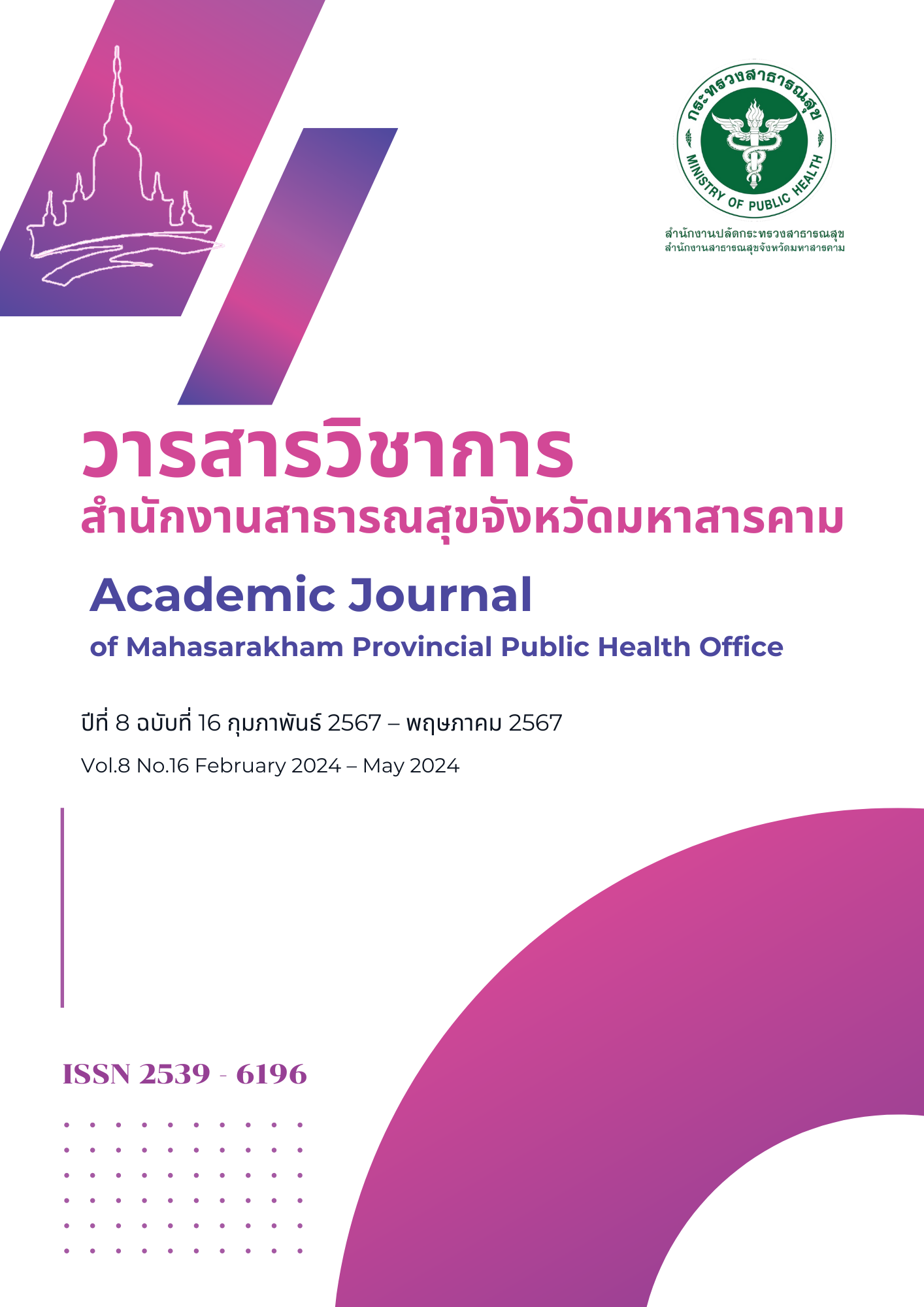Nursing care of patients with intraventricular hematoma receiving surgically inserted ventriculostomy and ventriculoperitoneal shunt : two cases study
Abstract
ABSTRACT
Objective : To study nursing care for patients with intracranial hemorrhage who have undergone drainage surgery and surgery to divert the cerebrospinal fluid from the ventricle to the peritoneum
Method : Two comparative case studies of patients with intracerebral hemorrhage receiving drainage surgery and surgery to divert the cerebrospinal fluid from the ventricle to the peritoneum at Mahasarakham Hospital were conducted. The tools used in the study included data recording, data gathering from patients' medical records, interviewing, and observation. Data analysis included a comparative analysis of risk factors for pathology, signs and symptoms, treatment, nursing diagnosis problems, and discharge planning.
Results : Patients in the two case studies presented with similar issues, namely intracranial hemorrhage leading to symptoms such as dizziness, persistent vomiting, weakness in the limbs and high blood pressure resulting hypertension drug. Both patients underwent surgery to divert cerebrospinal fluid from the brain to the abdominal cavity. However, Case 1 experienced shock and required prolonged ventilator support due to respiratory infections, leading to a 65-day hospital stay. In contrast, Case 2 did not develop shock or respiratory infections, had a shorter 22-day hospital stay. The nursing care provided to both patients differed due to the severity of their conditions, with Case 1 facing more critical care challenges. The critical nursing issues included shock management, oxygenation, high intracranial pressure, electrolyte imbalance, wound care, malnutrition risk, impaired communication, and reduced daily living abilities.
Conclusion : In the nursing care of patients with intracerebral hemorrhage receiving drainage surgery and surgery to divert the cerebrospinal fluid from the ventricle to the peritoneum, nurses are required to utilize nursing processes to assess the condition, make nursing diagnoses, plan nursing interventions, and evaluate outcomes to reduce mortality rates, prevent complication, promote brain recovery for quality of life of patients.
Keywords : intraventricular hematoma, Nursing Care


